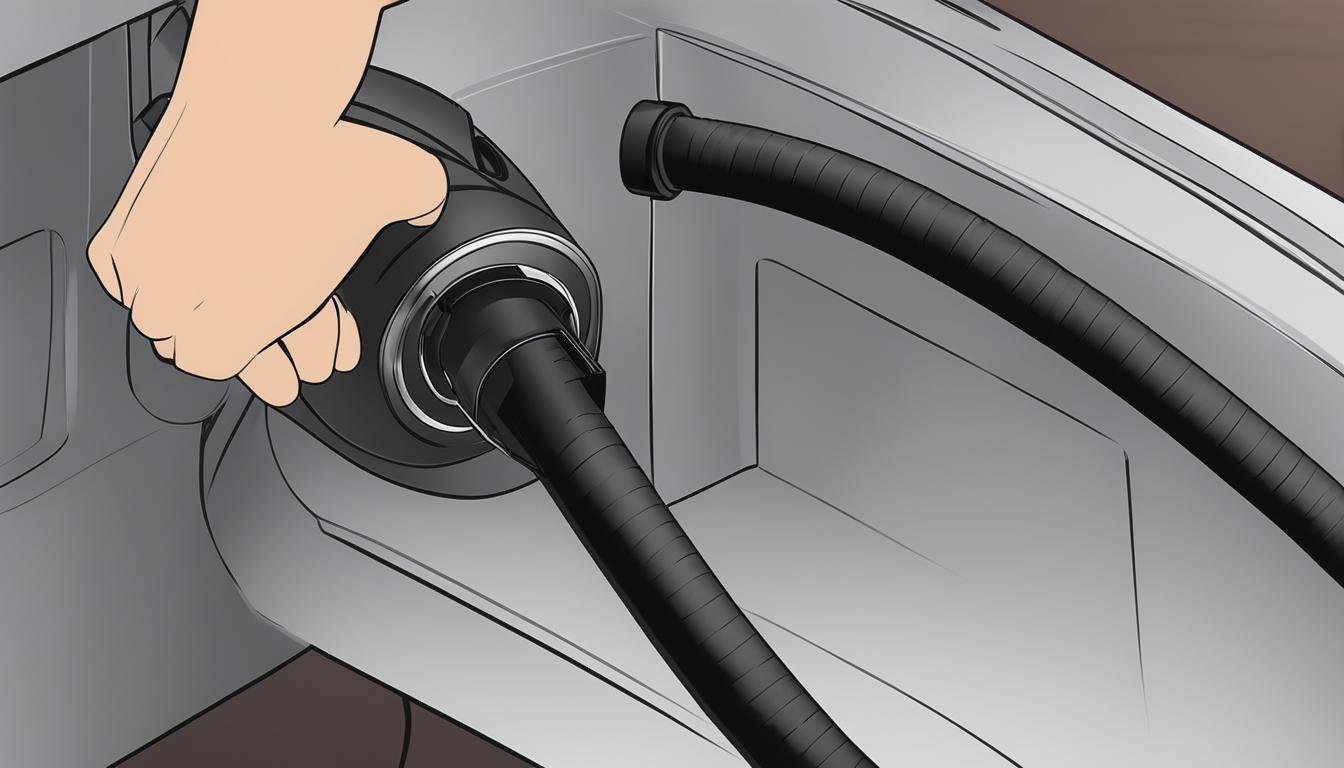When it comes to keeping our homes clean and free of dust and debris, a vacuum cleaner is an essential tool. To ensure that your vacuum cleaner works efficiently, it’s important to know how to connect and set it up correctly. In this guide, I will walk you through the step-by-step process of attaching the different parts of a vacuum cleaner so that you can have a hassle-free cleaning experience.
Key Takeaways:
- Properly connecting a vacuum cleaner is crucial for its functionality.
- Follow the manufacturer’s instructions for attaching different parts.
- Ensure that all parts are securely fitted to avoid loss of suction power.
- Regularly check and clean the filters to maintain optimal performance.
- Always unplug the vacuum cleaner before connecting or disconnecting any parts.
Tips for Using Your Vacuum Cleaner Effectively
Now that your vacuum cleaner is properly connected and set up, it’s time to maximize its cleaning performance. Here are some valuable tips to help you achieve optimal results:
- Choose the right vacuuming technique: Different surfaces and areas require different vacuuming techniques. For carpets, use slow, overlapping strokes to ensure deep cleaning. For hard floors, use a straight back-and-forth motion to pick up debris effectively. Remember to adjust the height settings of your vacuum cleaner to match the surface you’re cleaning.
- Start with an empty dustbin or bag: Always start your cleaning session with an empty dustbin or bag to maximize suction power. A full dustbin or bag can significantly reduce the efficiency of your vacuum cleaner.
- Regularly clean or replace filters: The filters in your vacuum cleaner play a crucial role in maintaining suction power. Over time, dirt and debris can clog the filters, diminishing performance. Clean or replace the filters as recommended by the manufacturer to ensure optimal suction power.
- Use attachments and accessories: Your vacuum cleaner likely came with various attachments and accessories designed for specific cleaning tasks. Take advantage of these tools to clean hard-to-reach areas, upholstery, stairs, and more. Using the right attachment for the job can greatly enhance your cleaning efficiency.
- Empty the dustbin or replace the bag regularly: As you clean, periodically check the dustbin or bag of your vacuum cleaner. Empty it when it reaches maximum capacity to maintain optimal airflow and suction power. A full dustbin or bag can result in reduced cleaning performance.
- Move furniture and obstacles: To ensure thorough cleaning, make an effort to move furniture and remove obstacles from the floor. This allows your vacuum cleaner to reach and clean every corner and crevice effectively.
“Using the right vacuuming technique and taking care of the maintenance will help you achieve exceptional cleaning results while prolonging the life of your vacuum cleaner.”
By following these vacuum cleaner tips and techniques, you can make the most of your cleaning sessions while ensuring your vacuum cleaner operates at its full potential. Remember, regular maintenance and proper usage are key to maximizing suction power and keeping your home clean and dust-free.
Conclusion
Properly maintaining your vacuum cleaner is crucial for achieving a clean and healthy home. By following the steps outlined in this guide, you can ensure that your vacuum cleaner is set up correctly and used effectively. Regular cleaning and maintenance are key to prolonging the lifespan of your vacuum and optimizing its performance.
To keep your vacuum cleaner in top shape, make sure to clean or replace the filters regularly. Clogged filters can hinder suction power and reduce cleaning efficiency. Additionally, empty the dust bin or replace the bag before it becomes too full to prevent debris from clogging the airflow.
It’s also important to check the brushroll and remove any tangled hair or debris. This will prevent the brushroll from getting stuck and ensure smooth operation. Moreover, remember to inspect the hoses, attachments, and belts for any signs of damage or wear and tear. Replacing worn-out parts promptly will prevent further damage and ensure optimal performance.
By implementing these vacuum cleaner maintenance tips and cleaning techniques, you’ll be able to keep your home spotless and enjoy the longevity of your vacuum cleaner. With proper care and regular maintenance, your vacuum cleaner will continue to deliver exceptional cleaning results for years to come.
FAQ
How do I connect a vacuum cleaner?
To connect a vacuum cleaner, follow these steps: 1. Unpack and lay out all the parts of the vacuum cleaner. 2. Attach the handle or wand to the main body of the vacuum. 3. Insert the desired cleaning attachment, such as a brush or crevice tool, into the vacuum’s hose or wand. 4. Plug in the vacuum cleaner to a power outlet. 5. Turn on the vacuum cleaner and adjust the settings as needed.
What should I do to use my vacuum cleaner effectively?
To use your vacuum cleaner effectively, consider the following tips: 1. Choose the right attachment for the specific surface or area you are cleaning. 2. Move the vacuum cleaner in a slow and steady motion to allow the suction to capture dirt and debris effectively. 3. Use overlapping strokes to ensure thorough cleaning. 4. Empty the vacuum cleaner bag or canister when it becomes full to maintain optimal suction power. 5. Regularly clean or replace filters to avoid clogging and maintain performance. 6. Vacuum high-traffic areas and areas prone to dirt and dust more frequently.
How can I prolong the lifespan of my vacuum cleaner?
To ensure the longevity of your vacuum cleaner, follow these maintenance tips: 1. Regularly clean the vacuum cleaner, including the brush roll, wheels, and air vents. 2. Check and replace worn-out or damaged parts, such as belts or hoses. 3. Store the vacuum cleaner in a clean and dry area. 4. Avoid running over large objects that may damage the vacuum cleaner. 5. Follow the manufacturer’s instructions for maintenance and cleaning.





Leave a Reply